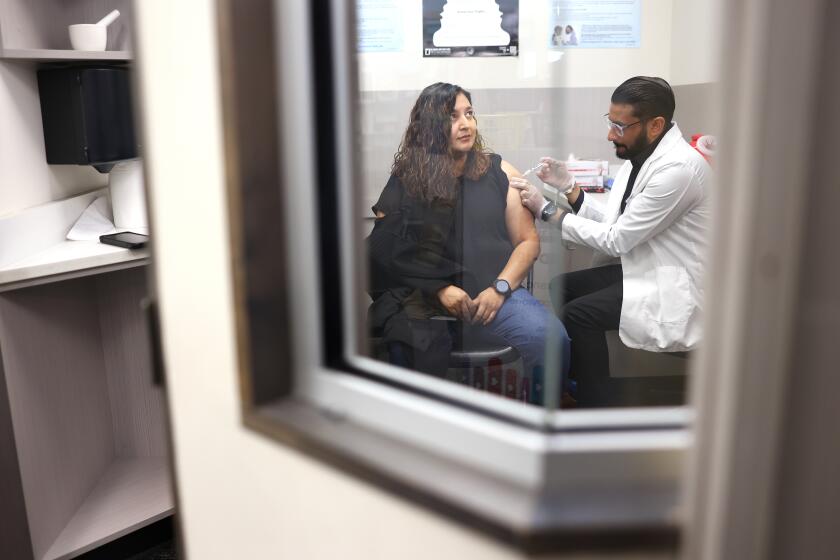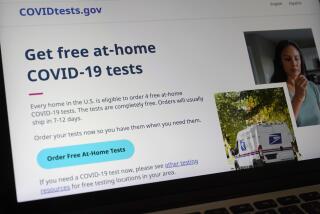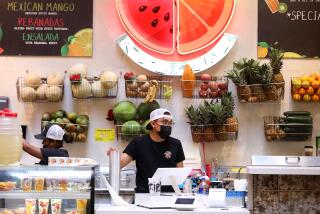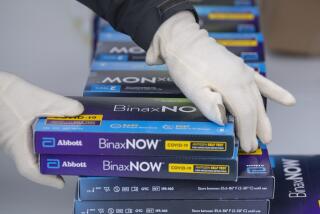Free COVID tests are back. Here’s how to get yours

- Share via
Coronavirus infections have come roaring back this year, prompting the Biden administration to renew one of its earliest responses to the COVID-19 pandemic: Free at-home test kits delivered via the mail.
The Department of Health and Human Services is offering to mail four test kits to any household that wants them. You can sign up for a shipment now at covidtests.gov.
The at-home tests involve swabbing the inside of your nose to collect a sample, mixing the sample with the included reagent, placing drops of the resulting solution on a test strip, then waiting 15 to 30 minutes for the results.
In 2022 and 2023, the government sent out 900 million free test kits, but the program has been idle since. . In the meantime, infections saw a surprisingly strong summer surge, powered by a more contagious COVID variant. And public health experts warn that, with cooler weather forcing more people and events indoors, the number of infections will probably rise again.
If you don’t want to wait for the tests to come by mail, you can find test kits at many pharmacies. Depending on your insurance coverage, you may be able to get reimbursed for the cost.
For low-income or uninsured families, the federal and state governments also provide free tests. Medi-Cal provides up to eight free test kits per month; to find a site that offers free tests for those without health insurance, go to testinglocator.cdc.gov.
The CDC says September and October are generally the best times for most people to get a COVID shot, though there are other factors to consider.
The kits offered by the federal government contain antigen tests, which look to see whether a sample taken from your nostrils contains a protein that binds to the coronavirus’ RNA. They deliver results quickly and at low cost — in stores, boxes of two tests cost between $16 and $24 — but the more expensive molecular tests can detect lower amounts of the coronavirus in your system.
Antigen tests have proven to be as good as molecular tests at avoiding false positive results. And according to the CDC, these tests are also just as good when it comes to detecting COVID-19 in someone who is showing symptoms of the disease, such as a cough, a fever and a sore throat.
Where the tests fall short, the CDC warns, is with people who have the virus but show no symptoms, especially if they’re in the early stages of infection and may not yet have enough of a viral load to infect others. The agency recommends that people perform a second antigen test a few days after the first one, which is why the kits are sold as two-packs.












